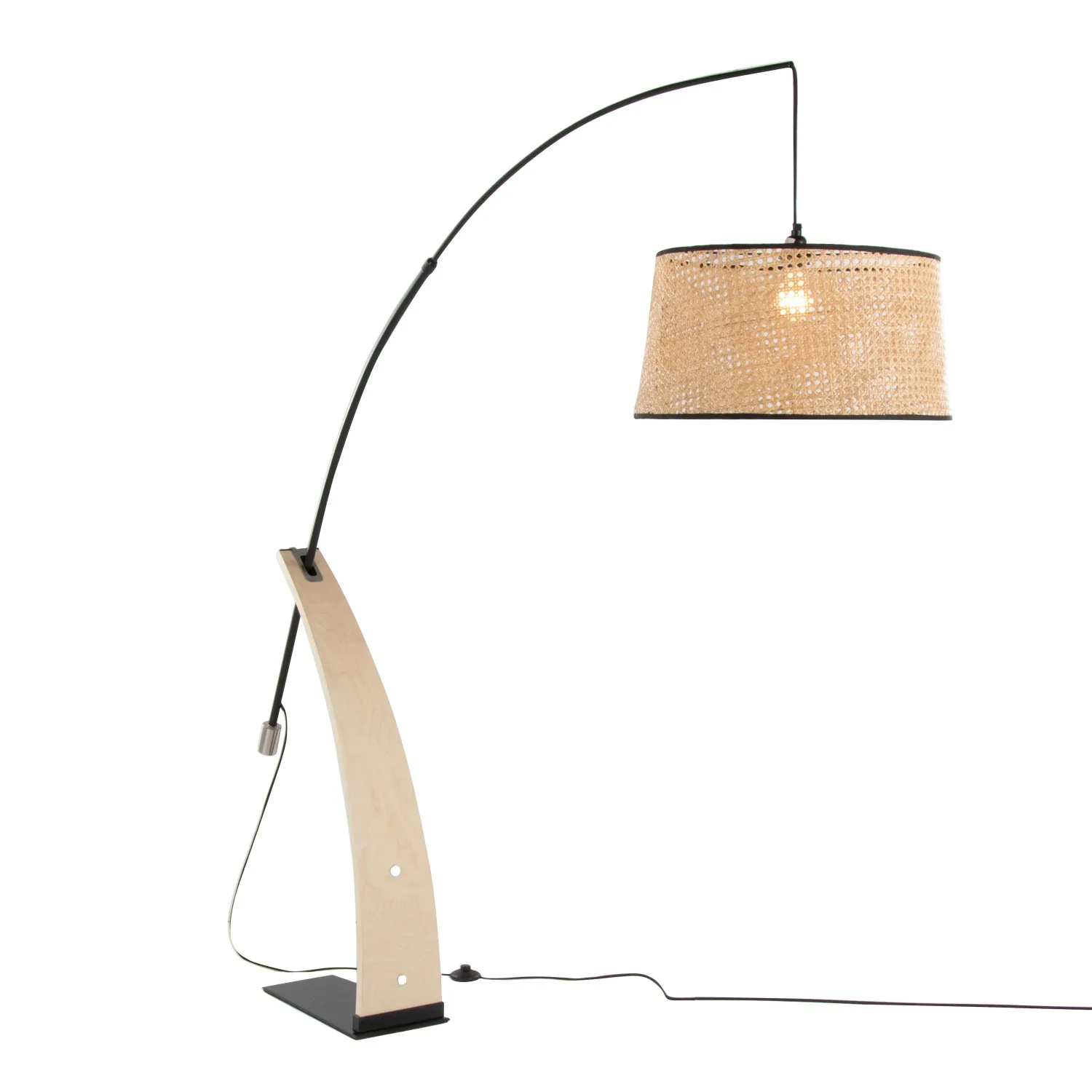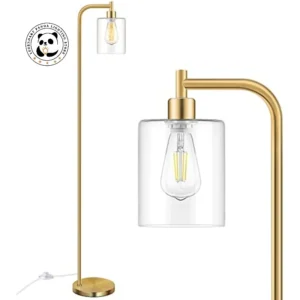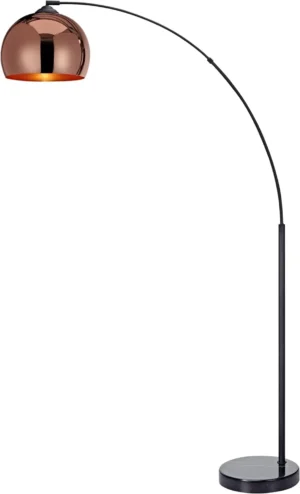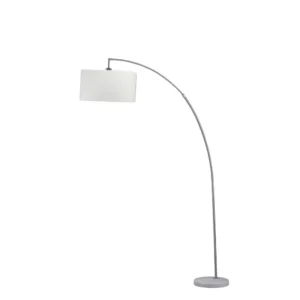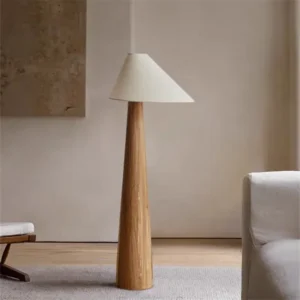Understanding Mid-Century Modern Lighting
Mid-century modern lighting stands out for its distinctive blend of form and function, characterized by clean organic forms and bold geometric shapes that make these pieces instantly recognizable. The style emerged during the post-war era spanning from the 1940s through the 1960s, yet continues to captivate homeowners and designers decades later.
What makes these lighting fixtures so special is their innovative use of materials combined with sculptural appeal. The signature elements include sputnik designs with radiating arms, smooth globe shades, gently tapered forms, and bases that double as artistic sculptures. These pieces weren’t just designed to illuminate—they were created to serve as functional art.
Materials play a crucial role in defining the mid-century aesthetic. Warm brass components often contrast with cool glass elements, while rich woods like walnut and teak add natural warmth. The designers of this era pioneered combinations that hadn’t been seen before: glass paired with teak, brass combined with perforated metal shades, and sculptural ceramic bases topped with textured fabric shades.
The guiding philosophy behind mid-century lighting was the perfect marriage of beauty and utility. Nothing was purely decorative—even the most sculptural pieces were designed with practical illumination in mind. This makes mid-century arc floor lamps particularly adaptable to today’s homes, where function remains equally important as style.
The technological innovations of the post-war period heavily influenced these designs. As new manufacturing techniques emerged, lighting designers embraced these possibilities to create previously impossible forms. Advances in materials science allowed thinner metal frames, more durable finishes, and more interesting glass treatments—all features that contribute to the enduring appeal of these fixtures today.
When choosing the perfect arc floor lamp for your space, understanding these historical elements helps you identify pieces that authentically capture mid-century aesthetics while serving your modern lighting needs.
Contemporary Interior Design Fundamentals
Contemporary design represents the aesthetic of the present moment, characterized by several defining features that make it distinctly different from mid-century modern:
- Clean, crisp lines with minimal ornamentation
- Neutral color palettes anchored by whites, blacks, and grays
- Emphasis on negative space and room to breathe
- Intentional focus on both natural and artificial lighting
- Smooth, polished surfaces and sleek profiles
Unlike modern design which refers to a specific historical period, contemporary design continuously evolves, embracing current trends and innovations. Today’s contemporary spaces prioritize comfort alongside visual appeal, with increasing emphasis on sustainable materials and smart home integration.
Contemporary interiors typically feature open floor plans where light can flow freely throughout the space. These environments create perfect backdrops for statement lighting pieces because of their uncluttered nature. The restrained palette and minimal decoration allow distinctive lighting fixtures to shine as focal points rather than competing with other elements.
Lighting in purely contemporary spaces often emphasizes recessed fixtures, track lighting, and understated designs that blend into the architecture. Materials commonly found include concrete flooring, glass partitions, and engineered surfaces with minimal texture. This refined approach to materials creates a sophisticated foundation that can be warmed and personalized with thoughtfully selected statement pieces.
The contemporary arc floor lamp exemplifies how modern spaces embrace clean lines while creating visual interest through graceful curves. These versatile pieces illuminate while adding architectural interest to minimalist environments.
Contemporary spaces also take full advantage of natural light with large windows, often uncovered or minimally dressed. Artificial lighting then complements this natural illumination, with carefully placed fixtures that enhance the feeling of openness. For more specific guidance on selecting contemporary lighting options that maintain clean lines while adding visual interest, exploring modern arc floor lamp guides can provide valuable inspiration.
Why These Styles Work Together: Design Harmony
Shared Design DNA
Despite being created decades apart, mid-century modern and contemporary design share fundamental principles that allow them to blend seamlessly. Both styles embrace clean lines and uncluttered spaces—the mid-century pieces with their organic curves and contemporary design with its crisp geometry create a pleasing visual conversation. Both approaches reject excessive ornamentation in favor of letting materials and forms speak for themselves.
Quality craftsmanship stands as another shared value between these design movements. Mid-century pieces were built to last generations, using solid woods and proper joinery. Contemporary design, while sometimes using newer materials, similarly values construction quality and durability. This shared commitment to longevity creates natural harmony.
Warmth Meets Refinement
Mid-century lighting introduces warmth and character to contemporary spaces that might otherwise feel too sterile or impersonal. The rich woods, warm metals, and organic shapes of mid-century fixtures add a layer of inviting texture against the smooth, often cool surfaces found in contemporary interiors.
The walnut tones of mid-century arc lamps in home decor create immediate visual warmth against concrete, glass, and neutral-colored walls. The brass finishes develop a beautiful patina over time, adding depth and history to newer spaces that might lack these qualities.
Visual Tension Creates Interest
The contrast between vintage and modern creates a deliberate visual tension that makes spaces more interesting than either style could achieve alone. When a sputnik chandelier with its atomic-age exuberance hangs above a minimalist dining table, the juxtaposition creates an eye-catching focal point that elevates the entire room.
This tension works because both styles are confident in their identities. Contemporary design’s restraint provides breathing room for mid-century pieces to shine, while the mid-century elements add personality and prevent contemporary spaces from feeling generic or cold.
Sophistication Through Layering
Adding mid-century lighting to contemporary interiors creates sophisticated layering that suggests the space evolved over time rather than being designed in one shopping trip. This collected-over-time aesthetic feels more authentic and personal than spaces furnished entirely in one style.
The combination also tells a design story that honors innovation across different eras. Mid-century designs represented cutting-edge thinking in their time, as contemporary pieces do today. Bringing them together celebrates this spirit of innovation and forward-thinking design across generations.
Signature Mid-Century Lighting Styles for Contemporary Spaces
Pendant Lights
Mid-century pendant lighting adds immediate character to contemporary spaces while maintaining clean lines that complement modern interiors. Consider these distinctive styles:
- Globe pendants with smooth glass spheres that provide soft, diffused light—perfect above kitchen islands or flanking a contemporary bed
- Saucer-shaped suspended fixtures with wide, shallow profiles that distribute light evenly across dining surfaces
- Multi-arm pendant clusters featuring branching designs that fill vertical space in high-ceiling rooms
- Geometric pendants with angular cut-outs that cast interesting shadow patterns
These pendants work particularly well in contemporary spaces because they provide clear focal points without overwhelming minimalist surroundings. The simple geometry of many mid-century pendants connects visually with clean-lined contemporary furniture while adding historical depth.
Floor Lamps
Floor lamps offer the perfect opportunity to introduce mid-century character without requiring any installation or permanent commitment.
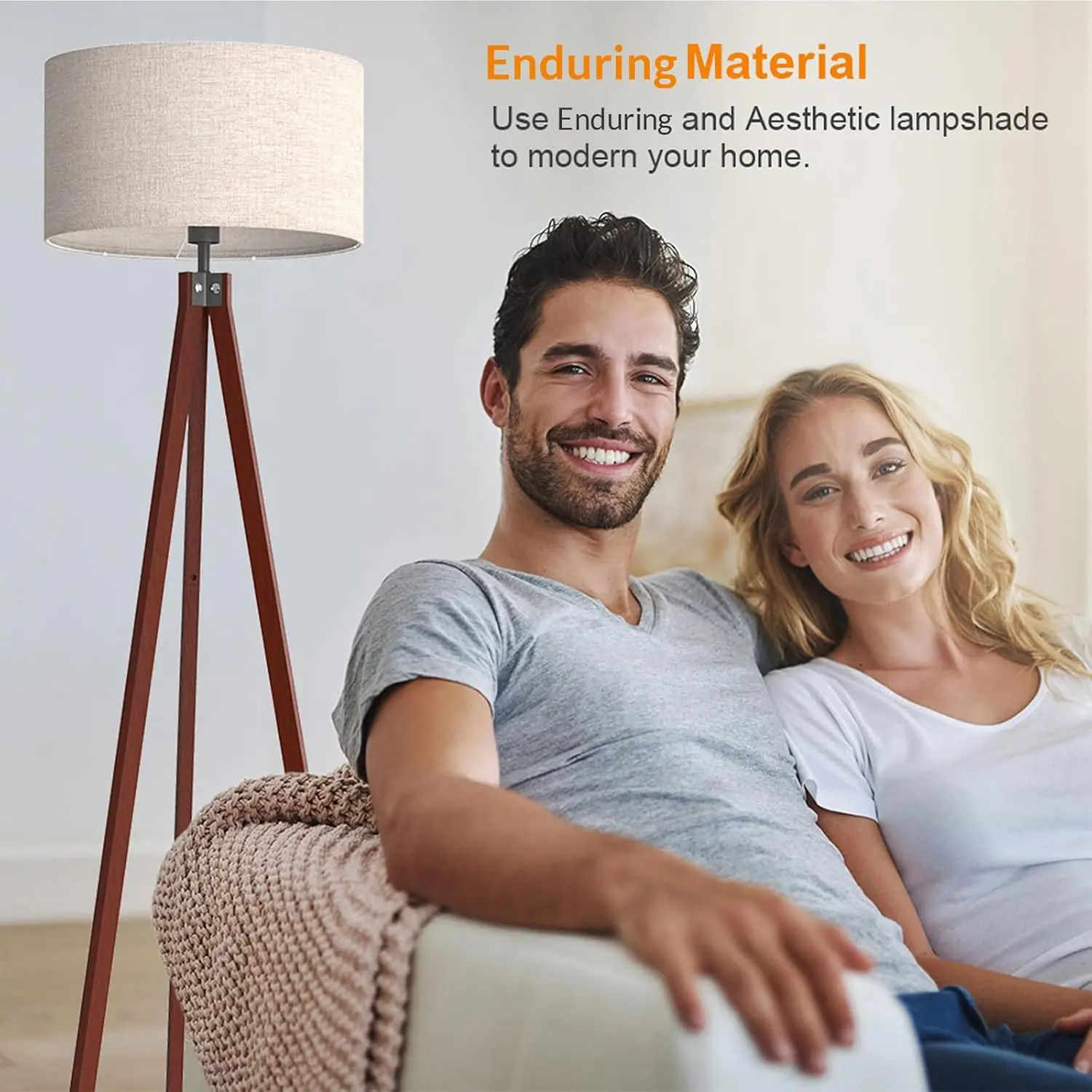
- Arc floor lamps with dramatic sweeping curves and heavy marble bases provide both task lighting and sculptural presence. The wood arc floor lamp variation brings organic warmth to contemporary seating areas.
- Tripod-based floor lamps with tapered legs and conical shades anchor reading nooks while adding architectural interest
- Multi-directional reading lamps featuring adjustable arms and swiveling heads offer functional flexibility alongside mid-century style
- Torchiere designs that direct light upward create ambient illumination while serving as vertical design elements
These floor lamps work exceptionally well beside contemporary sofas or lounge chairs, creating functional reading light while adding visual contrast to boxy modern furniture. The curved elements of many mid-century floor lamps help soften contemporary rooms that might otherwise feel too angular.
Table Lamps
Mid-century table lamps bring personality to contemporary surfaces while maintaining a scale that doesn’t overwhelm:
- Sculptural ceramic-base lamps with textured glazes add organic elements to sleek contemporary side tables
- Mushroom-shaped and globe lamps create soft ambient lighting with distinctive silhouettes
- Geometric metal table lamps with interesting shade designs cast patterned light effects
- Mixed-material designs combining wood, metal, and fabric introduce textural variety
These lamps excel at warming up contemporary console tables, bedside surfaces, and office desks. Their human scale creates intimate lighting zones within larger contemporary open-plan spaces.
Chandeliers & Statement Fixtures
For maximum impact, mid-century chandeliers and statement fixtures create unforgettable focal points in contemporary interiors:
- Starburst and sputnik-style fixtures featuring radiating arms that create dramatic ceiling statements
- Multi-arm brass chandeliers with exposed globe bulbs that fill vertical space with warm light
- Geometric frame chandeliers that combine industrial simplicity with mid-century proportions
- Tiered fixtures with concentric elements that create depth and visual complexity
When installed in contemporary spaces with clean lines and minimal decoration, these bold fixtures become the room’s defining element. The marble base arc floor lamp represents how substantial materials can create grounding presence within airy contemporary spaces.
The revival of mid-century lighting designs has inspired many new interpretations that honor the original aesthetic while incorporating mid-century arc lighting design principles for modern living. These pieces bring instant character and design credibility to contemporary settings.
Integration Techniques: Creating Cohesive Spaces
1. Balance Scale and Proportion
Creating harmony between mid-century lighting and contemporary spaces starts with getting the scale right. An oversized sputnik chandelier that looks dramatic in a spacious loft might overwhelm a smaller dining area. Consider these guidelines:
- For pendant lighting, ensure at least 30-36 inches of clearance above tables and countertops
- Choose fixture diameters proportional to the surface below—generally about one-half to two-thirds the width of a table
- Allow adequate negative space around statement lighting to prevent visual clutter
- Consider ceiling height when selecting hanging fixtures—taller ceilings can accommodate larger, more dramatic pieces
In contemporary open-concept spaces, lighting scale should respond to both the immediate area and the room as a whole. A properly scaled fixture creates visual anchoring without disrupting sight lines or overwhelming the clean aesthetic.
2. Harmonize Materials and Finishes
Successfully blending mid-century lighting with contemporary interiors requires thoughtful material connections:
- Create material echoes by picking up brass tones from lighting in small accessories or furniture details
- Balance warm-toned woods in mid-century fixtures with similar wood elements elsewhere in the space
- Use metal finishes consistently—mixing too many different metals can look unintentional
- Consider contrast as a design tool—the warm brass of a mid-century fixture pops beautifully against cool gray contemporary walls
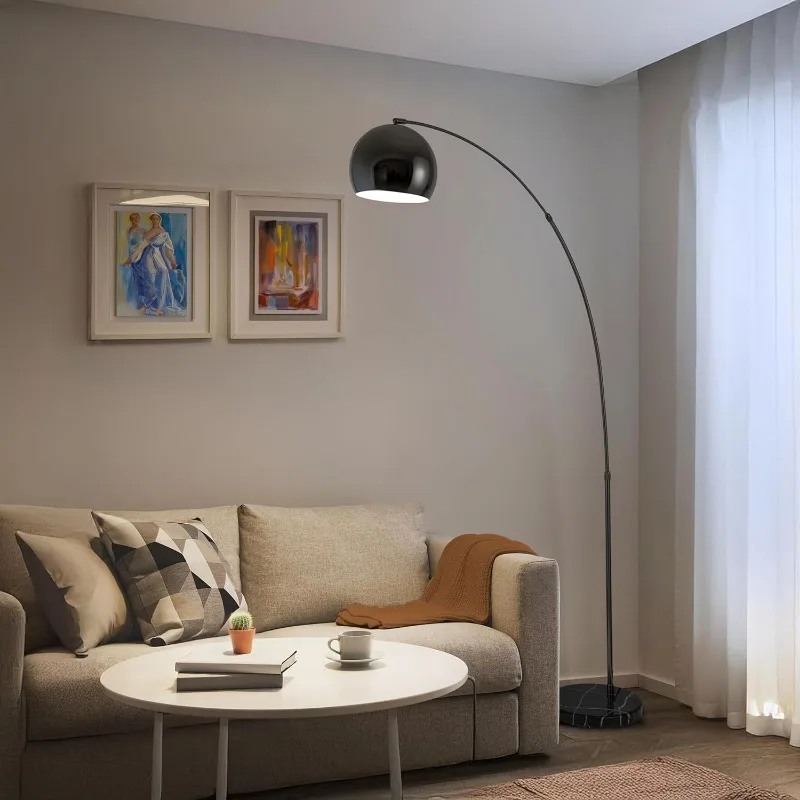
The key is creating intentional connections that make the mid-century elements look deliberately chosen rather than randomly introduced. The perfect arc floor lamp guide can help you navigate these material considerations for a cohesive look.
3. Develop a Cohesive Color Strategy
Color coordination creates invisible threads that tie different design eras together:
- Use mid-century lighting to introduce controlled color accents within a neutral contemporary palette
- Pull subtle tones from lighting fixtures into textile choices for pillows or throws
- Consider how the color temperature of light bulbs affects both the fixture and the surrounding space
- Create color transitions with mid-toned neutrals that bridge between warm mid-century and cool contemporary elements
A thoughtful color strategy makes the blend feel intentional rather than accidental. Even small color connections can create cohesion between different design elements.
4. Layer Lighting Effectively
The most successful spaces blend different types of lighting to create both function and atmosphere:
- Combine ambient, task, and accent lighting across both mid-century and contemporary fixtures
- Use mid-century table or floor lamps for task lighting while keeping recessed ambient lighting contemporary
- Install dimmers on mid-century statement pieces to control their visual impact
- Consider how light layering creates different moods for different times of day
This layered approach ensures spaces remain functional while allowing the decorative aspects of mid-century fixtures to shine. It’s about creating a lighting ecosystem where each piece contributes to both the practical and aesthetic needs of the space.
Room-by-Room Inspiration Guide
Living Room Applications
The living room offers multiple opportunities to showcase mid-century lighting within contemporary settings:
- Position an arc floor lamp with a marble base behind a contemporary sectional, allowing it to curve over seating areas for perfect reading light
- Install a sputnik chandelier as a central focal point in a room with clean-lined furniture
- Place matched pairs of mid-century table lamps on contemporary console tables flanking a modern sofa
- Use adjustable wall sconces with extended arms to highlight artwork on gallery walls
These applications work because they combine function with visual interest. The sculptural quality of mid-century lighting adds character to contemporary living spaces that might otherwise lack distinctive personality.
Dining Room Solutions
The dining area presents perfect opportunities for statement lighting that enhances mealtime ambiance:
- Hang a linear pendant with multiple globes above a rectangular dining table for even illumination
- Cluster several smaller globe pendants at staggered heights over round dining tables
- Center a dramatic sputnik chandelier above a minimalist dining set for maximum contrast
- Supplement overhead lighting with a distinctive floor lamp in the dining room corner for layered illumination
In contemporary dining spaces with clean lines and minimal decoration, mid-century lighting adds warmth and conversation-starting visual interest.
Bedroom Lighting Concepts
Bedrooms benefit from the softer aspects of mid-century lighting design:
- Replace traditional bedside table lamps with hanging pendants to free up nightstand space
- Position an adjustable reading floor lamp beside a contemporary upholstered chair to create a cozy corner
- Install minimal wall sconces with warm-toned shades flanking a platform bed
- Consider a small-scale sputnik fixture in master bedroom sitting areas for unexpected character
These applications create intimate lighting zones within the bedroom while adding distinctive design elements that elevate simple contemporary sleeping spaces.
Kitchen and Utility Spaces
Even functional spaces benefit from thoughtfully chosen mid-century lighting touches:
- Hang globe pendants in odd numbers above contemporary kitchen islands
- Complement sleek cabinetry with wall-mounted adjustable sconces near preparation areas
- Install a statement fixture with warm metallic elements in an otherwise utilitarian breakfast nook
- Use directional task lighting with mid-century styling near workstations and prep areas
The 3-light arc floor lamp provides versatile illumination for multipurpose spaces where different activities require different lighting solutions.
Authentication and Selection Guide
Distinguishing Quality in Mid-Century Lighting
Whether choosing vintage pieces or contemporary interpretations, quality indicators remain consistent:
- Substantial weight often indicates better materials and construction
- Smooth, even finishes without bubbling, peeling or inconsistency
- Solid metal components rather than hollow or plastic parts
- Attention to details like cord covers, switches, and socket quality
- Precise joinery in wooden elements without gaps or rough edges
Quality lighting should feel substantial and operate smoothly. Adjustable parts should move with precision rather than wobbling or sticking.
Authentic Vintage vs. Contemporary Reproductions
Both vintage pieces and quality reproductions offer distinct advantages:
Authentic Vintage Benefits:
* Genuine historical connection and potential investment value
* Often features hand-craftsmanship difficult to replicate today
* Develops natural patina and character over decades
* Offers unique pieces unlikely to appear in others’ homes
Quality Reproduction Benefits:
* Updated to meet current electrical safety standards
* Often more affordable than rare vintage pieces
* Available in consistent condition without damage or wear
* Can be produced in modified dimensions for modern spaces
The retro arc lamp category offers pieces that capture vintage aesthetics while meeting contemporary safety standards and size requirements.
Evaluating Condition and Functionality
For vintage pieces, condition assessment is crucial:
- Check all electrical components for signs of wear or damage
- Inspect for stability, rust, or structural weaknesses
- Evaluate shades for discoloration, brittleness, or tears
- Consider professional rewiring for pieces over 30 years old
Functionality must always take precedence over aesthetics—beautiful fixtures that pose safety hazards or don’t provide adequate light ultimately fail their primary purpose.
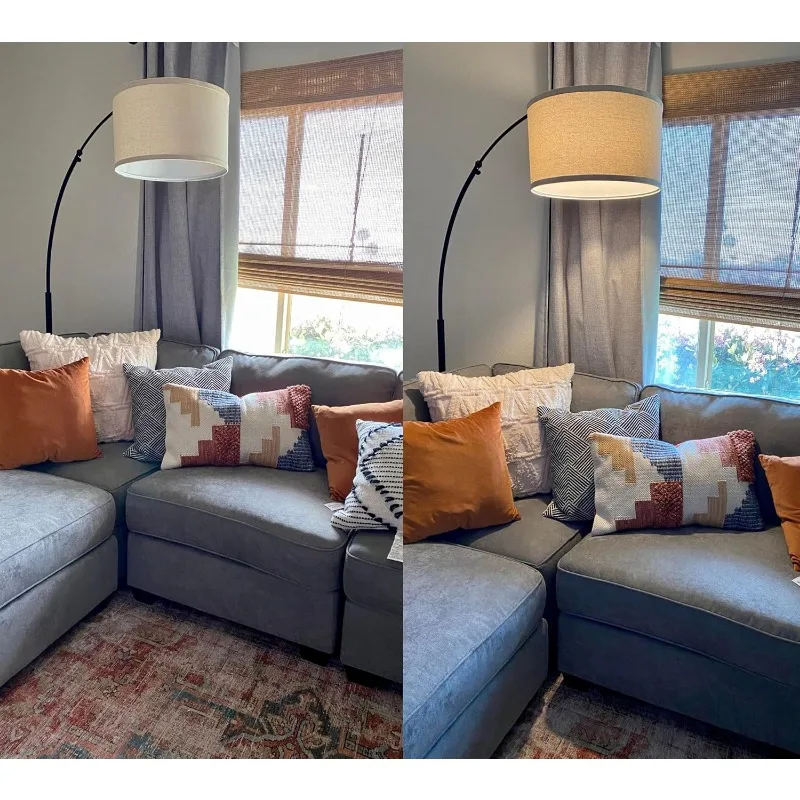
Where to Source Quality Pieces
Finding the right lighting involves knowing where to look:
- Specialty retailers like Interior Ivy that curate quality designs
- Verified vintage dealers with expertise in mid-century pieces
- Reputable manufacturers known for authentic reproductions
- Custom lighting craftspeople who create inspired pieces
When purchasing online, look for detailed specifications, clear photos from multiple angles, and transparent policies regarding materials and returns.
Common Styling Mistakes to Avoid
1. Overdoing the Mid-Century Theme
The most successful spaces use mid-century lighting as an accent within contemporary settings, not as part of an all-encompassing retro theme. Avoid turning your home into a period movie set by:
- Limiting mid-century elements to a few key statement pieces rather than filling every lighting fixture
- Balancing distinctive vintage shapes with clean contemporary lines elsewhere
- Using mid-century lighting to complement contemporary furnishings, not compete with them
- Considering the overall composition rather than focusing exclusively on individual pieces
The goal is integration, not domination. Mid-century lighting should enhance contemporary spaces, not transform them completely.
2. Scale and Proportion Errors
Common scale mistakes include:
- Choosing fixtures too small for the space, making them look insignificant
- Selecting oversized pieces that overwhelm other elements or obstruct views
- Hanging pendants at incorrect heights that interfere with sightlines or activities
- Placing fixtures too close together or too far apart for visual cohesion
Scale errors immediately disrupt visual harmony. Take time to map out dimensions and sight lines before committing to specific pieces.
3. Material and Finish Mismatches
Problematic combinations to avoid:
- Mixing too many different metal finishes without a unifying element
- Combining warm-toned mid-century woods with cool-toned contemporary furnishings without transitional elements
- Introducing materials that have no relationship to anything else in the space
- Creating unintentional contrast through random material selections
Instead, create purposeful material connections through coordinating furniture with lighting elements to ensure visual coherence.
4. Neglecting Functional Lighting Needs
Beautiful fixtures that don’t provide adequate illumination ultimately fail their purpose:
- Relying solely on decorative lighting without considering task illumination needs
- Choosing fixtures based on aesthetics alone without considering light output
- Installing vintage fixtures without updating bulbs for appropriate brightness
- Failing to include different lighting types for different activities and times of day
The most successful lighting plans address both form and function, ensuring spaces look beautiful while remaining practical for everyday use.
Beyond Lighting: Creating Complete Mid-Century and Contemporary Fusion
Effective design fusion extends beyond lighting choices to create comprehensive environments where all elements work together harmoniously. Consider these additional components:
- Furniture selections that bridge both eras—such as contemporary sofas with tapered legs that reference mid-century proportions
- Textiles that incorporate geometric patterns reminiscent of mid-century designs but rendered in contemporary color palettes
- Accessories that echo materials found in lighting fixtures—brass decorative objects or walnut trays that connect to lighting finishes
- Wall treatments that provide appropriate backdrops—warm white walls often showcase both styles effectively
Brass Arc Floor Lamp, Contemporary Arc Floor Lamp, LED Arc Floor Lamp
Price range: $490.72 through $522.04 Select options This product has multiple variants. The options may be chosen on the product pageContemporary Arc Floor Lamp, Large Arc Floor Lamp, Marble Base Arc Floor Lamp
$224.94 Select options This product has multiple variants. The options may be chosen on the product pageMid-Century Arc Floor Lamp, Wood Arc Floor Lamp
$230.86 Select options This product has multiple variants. The options may be chosen on the product pageContemporary Arc Floor Lamp, Silver Arc Floor Lamp
$459.99 Select options This product has multiple variants. The options may be chosen on the product pageVintage Arc Floor Lamp, Wood Arc Floor Lamp
Price range: $603.87 through $1,346.09 Select options This product has multiple variants. The options may be chosen on the product page- $1,003.85 Select options This product has multiple variants. The options may be chosen on the product page
Creating a cohesive design narrative involves considering how each element relates to others in the space. When mid-century lighting is part of a thoughtful overall concept rather than an isolated feature, the result feels intentional and sophisticated.
Vintage arc floor lamps can anchor a design that tells a story of appreciation for timeless aesthetics while embracing contemporary comfort and functionality. This balance creates spaces that feel both fresh and established.
Customizing Mid-Century Inspired Lighting for Your Space
The most successful interiors adapt design principles to specific spaces rather than rigidly following formulas. Consider these approaches for personalizing your mid-century and contemporary fusion:
- For homes with low ceilings, choose flush-mount mid-century fixtures or table lamps rather than hanging pendants that might make spaces feel cramped
- In compact rooms, select smaller-scale pieces with visual lightness that won’t overwhelm limited square footage
- For large, open spaces, cluster multiple mid-century fixtures to create defined zones within expansive areas
- In homes with architectural challenges, use lighting to highlight strengths and minimize weaknesses
The beauty of combining mid-century lighting with contemporary design lies in its flexibility. This pairing can be adapted to various architectural styles—from urban lofts to suburban homes to modern apartments—by adjusting the balance between elements.
Different aesthetic preferences can also be accommodated within this design fusion. Those preferring warmer, more organic interiors might lean more heavily on wooden mid-century pieces, while those embracing minimalism might select sleeker metal fixtures with cleaner lines.
The key is creating a space that reflects personal style while maintaining design integrity. When thoughtfully executed, the blend of mid-century lighting with contemporary surroundings creates timeless interiors that honor design history while embracing present-day comfort and functionality.

